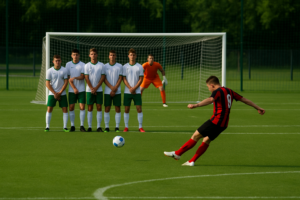
Football is a game of tactics and strategy, where every square metre of the pitch has a special significance. One particularly important region that can often make the difference between winning and losing is the so-called zone 14. This area has proven to be particularly valuable for creating scoring opportunities and is a key element in modern football analysis, especially through the use of video analysis.
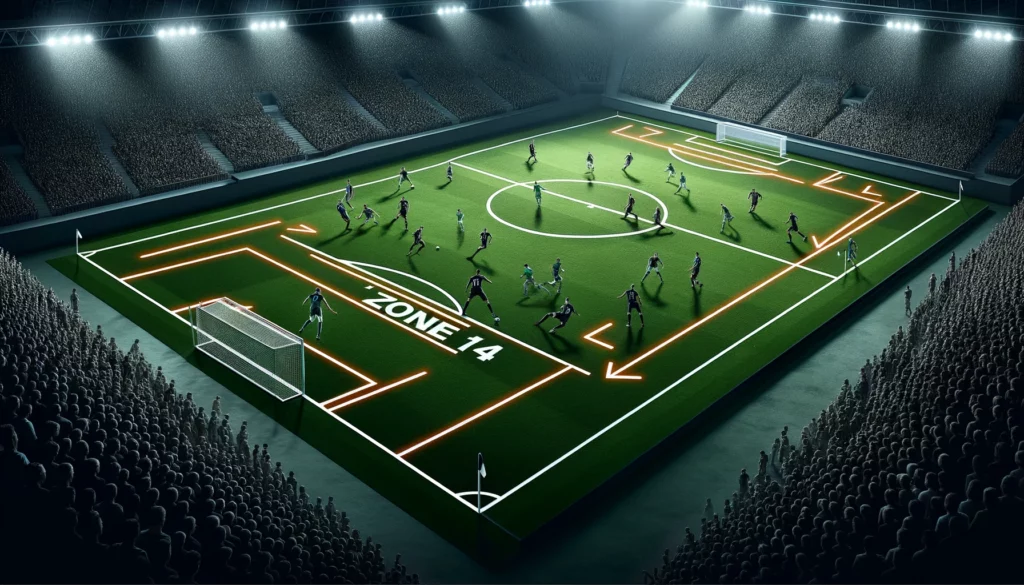
In football, the pitch is often divided into zones to enable detailed tactical analysis and strategy development. A common division consists of 18 zones, which divide the pitch into rectangular areas.
Zone1: The left wing in your own half of the defence. This is where the defence concentrates on attacks coming down the opponent's right wing.
Zone 2: Centre of your own penalty area. Main area of the goalkeeper and the centre-backs against the ball.
Zone 3: Right wing area in your own half of the defence. Defence against attacks down the opponent's left wing.
Zone 4: Left midfield in your own half. Supporting the defence and initiating the build-up play.
Zone 5: Central midfield in your own half of defence. Important zone for switching from defence to attack.
Zone 6: Right midfield in own half of defence. Serves to support the defence and the transition to attack.
Zone 7: Left wing area in midfield. Used for offensive runs and crosses.
Zone 8: Central defensive midfield. Link between defence and midfield, ball control and distribution.
Zone 9: Right wing area in midfield. Offensive runs and crosses.
Zone: 10 Left centre midfield. Creative build-up play and switching to attack.
Zone 11: Centre attacking midfield. Decisive zone for creative passing and game control.
Zone 12: Centre right midfield. Similar to zone 10, important for building up play and switching to attack.
Zone 13: Left attacking third in the opponent's half. The focus is on creating scoring opportunities and passing into the penalty area.
Zone 14: Central attacking third in front of the opponent's penalty area. Decisive zone for shots on goal and dangerous passes.
Zone 15: Right attacking third in front of the opponent's penalty area. Similar to zone 14, important for the preparation and execution of attacks.
Zone 16: Left wing area in and around the opponent's penalty area. Used to create scoring opportunities and crosses.
Zone 17: Centre of the opponent's penalty area. Key zone for scoring goals and putting maximum pressure on the opponent's defence.
Zone 18: Right wing area of the opponent's penalty area. Used to create scoring opportunities and crosses.
These zones help coaches and analysts to systematically analyse the pitch and develop targeted strategies for different phases and situations of the game. They enable a detailed analysis of the strengths and weaknesses of both the team and the opponent.
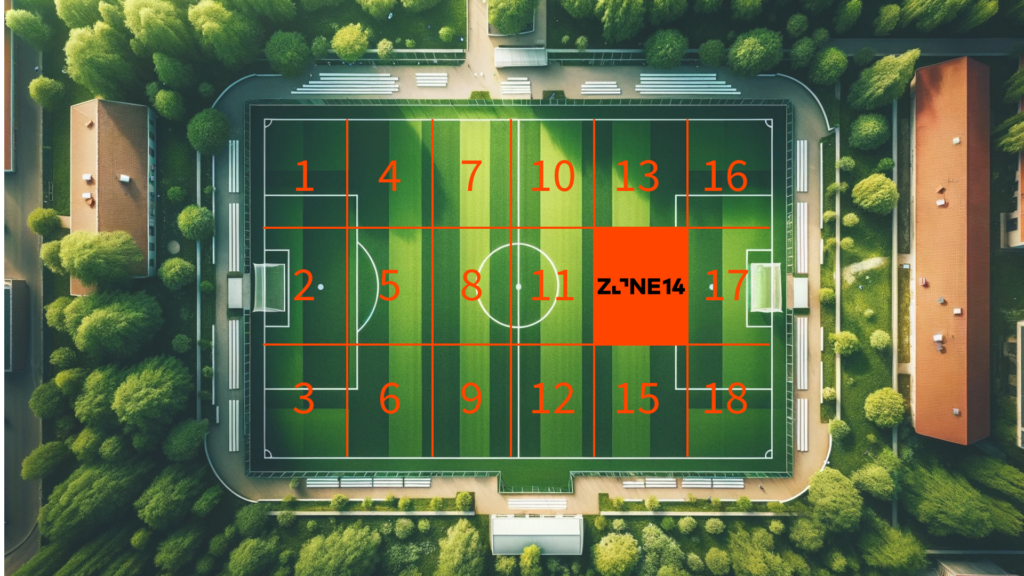
Zone 14 in football, also known as the ‘golden zone’, is strategically an extremely important area of the pitch. It is located centrally in front of the opponent's penalty area, about 10 to 20 metres from the goal. Why is zone 14 so important? Quite simply, it offers players an excellent position to play dangerous passes into the penalty area or to shoot directly at goal. If a team manages to control the ball in this zone, the chances of scoring a goal increase considerably. The importance of this zone can be explained by several factors:
High success rate for shots on goal: Statistics show that shots on goal from zone 14 have a higher success rate. This is because the players in this zone have a better view of the goal and there are fewer opposing defenders between themselves and the goal.
Key position for build-up play and converting chances: Zone 14 is often the place where the decisive passes that lead to goals are played. Players who are in this zone have the opportunity to play dangerous passes into the penalty area or to score themselves.
High level of control and overview: Players in zone 14 have a central position on the pitch and therefore a good overview of the action. They are able to direct attacks and maintain possession of the ball, allowing the team to put pressure on the opposing defence.
Psychological effect on the opponent: The presence of one or more players in zone 14 can put the opponent's defence under pressure and provoke mistakes. Defenders must be constantly alert and risk opening up spaces that can be exploited by other attackers.
Tactical flexibility: Teams that utilise zone 14 effectively can play more variably. They can attack both through the centre and down the wings, as defenders are often forced to focus their attention on this central zone.
Teams that manage to control this zone and utilise it effectively often have a big advantage in the game.
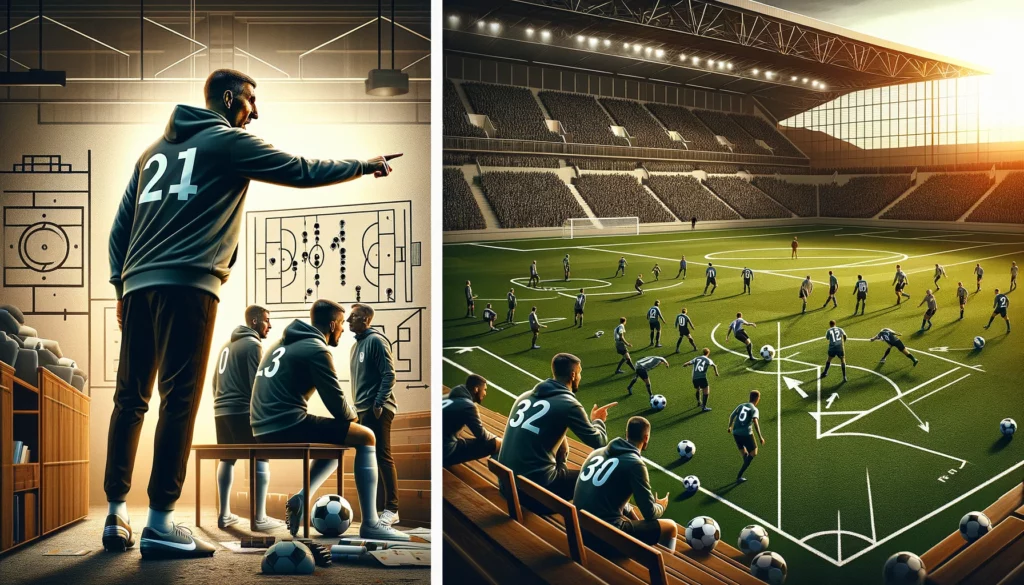
Modern video analysis has revolutionised the way coaches and analysts understand football and develop strategies. In particular, video analysis also offers invaluable advantages in relation to Zone 14:
Player movements and positioning: Video analysis allows coaches to study the movements and positioning of key players in zone 14. Players who are often in this zone are often creative midfielders or forwards who can play dangerous passes or finish themselves.
Player profiles: Analysis can show which players are particularly effective in zone 14 and which actions they prefer in this zone (for example: shooting, passing, dribbling).
Attacking patterns: The analysis can provide information on how a team builds attacks that involve zone 14. This can improve the understanding of certain attacking patterns and favoured moves.
Defensive behaviour of the opponent: It is also possible to analyse how the opponent defends zone 14. Which players are there? What pressure is exerted?
Shooting positions and success rate: By analysing the shooting positions and the success rate of shots from zone 14, coaches and analysts can find out which shots are most effective.
Pass routes and directions: Analysing passing routes in and out of zone 14 shows how a team creates chances. It becomes visible which passing combinations are successful and which are not.
Use of space: Video analyses can help to understand how well a team controls zone 14. Is the space being utilised effectively or is it often left unoccupied?
Possession patterns: Analysing possession in zone 14 can show how long a team can keep the ball in this crucial zone and how they defend the ball there.
Movements without the ball: Analysing the movements of players without the ball in zone 14 is crucial to understanding how space is created or defended.
Winger involvement: How are the wingers involved in attacks that affect zone 14? Wingers' runs into zone 14 can create dangerous chances.
Free kicks and corners: Analysing set-piece situations that are played into the penalty area can reveal how effectively a team uses these opportunities.
Weaknesses of the opponent in set pieces: By analysing the opponent's defence of set-pieces in zone 14, weaknesses can be identified and exploited.
Game reactions: How does the team react when the ball is lost in zone 14? The ability to quickly switch to defence can be crucial.
In-game adjustments: The analysis can help to make adjustments during the game. If a tactic is not working, the video analysis can show alternative approaches.
We chose our name for a reason. If you want to know how your team can make better use of Zone 14, we'll help you understand exactly what happens in this important area of the pitch. zone14 Replay can help you to provide your team with all the necessary information directly and without much effort. Visit our website now for more information or sign up directly for a no-obligation demo.
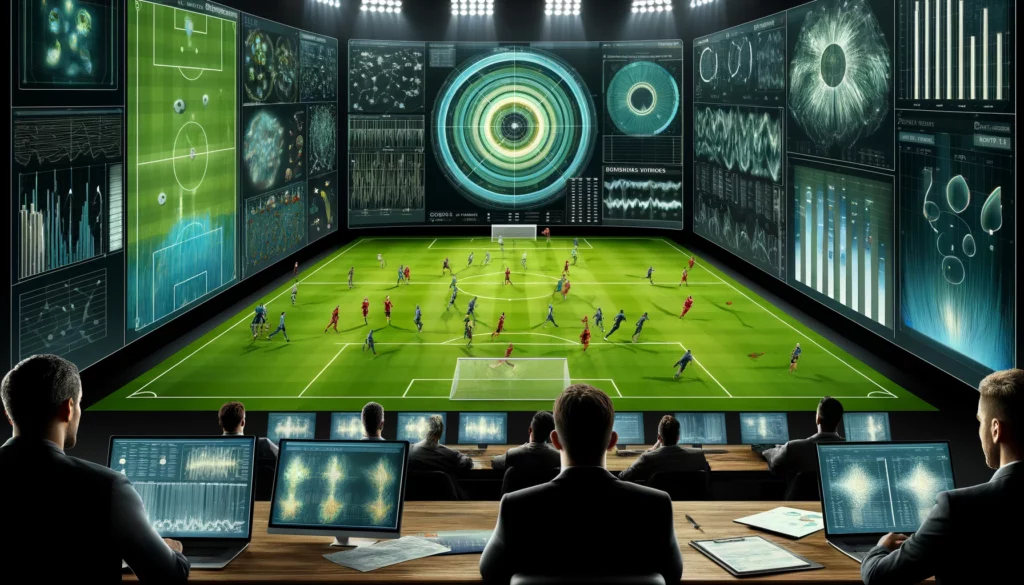
Coaches and teams have developed different strategies to use the 14 zone effectively and maximise its advantages:
Ball possession and game control: A key element is precise passing and skillful positional play to get the ball into the 14 zone. This requires not only technical but also tactical skill.
Get playmakers into position: A particularly creative player is often deployed as a playmaker in the zone 14. These players have the ability to play decisive passes or make dangerous finishes themselves.
Create overloads: Some teams try to create more space and time for attacks by overloading certain zones in order to penetrate zone 14 more effectively.
Use counter-pressing: Quick counter-pressing after losing the ball near zone 14 can be used to initiate surprise attacks. This requires intensive pressing and quick switching.
Some of the most successful football teams in the world have shown how important the zone 14 can be. Here are two of the most outstanding examples:
FC Barcelona under Pep Guardiola and Luis Enrique:
Lionel Messi, Xavi and Andrés Iniesta: Under Pep Guardiola, FC Barcelona were known for holding the ball patiently and playing precise passes into the 14 zone. Xavi and Iniesta were masters at playing dangerous passes in this area or creating scoring chances themselves. Lionel Messi used this zone to set up his unrivalled dribbles and finishes. FC Barcelona under Luis Enrique also successfully relied on controlling the 14 zone, with players such as Neymar and Luis Suárez also playing an important role.
Manchester City under coach Pep Guardiola:
Kevin De Bruyne: Manchester City have perfected the zone 14 concept under Pep Guardiola. Kevin De Bruyne is an outstanding example of a player who utilises this zone masterfully. Guardiola has structured the team in such a way that they regularly control the 14 zone through skilful changes of position and quick passing.
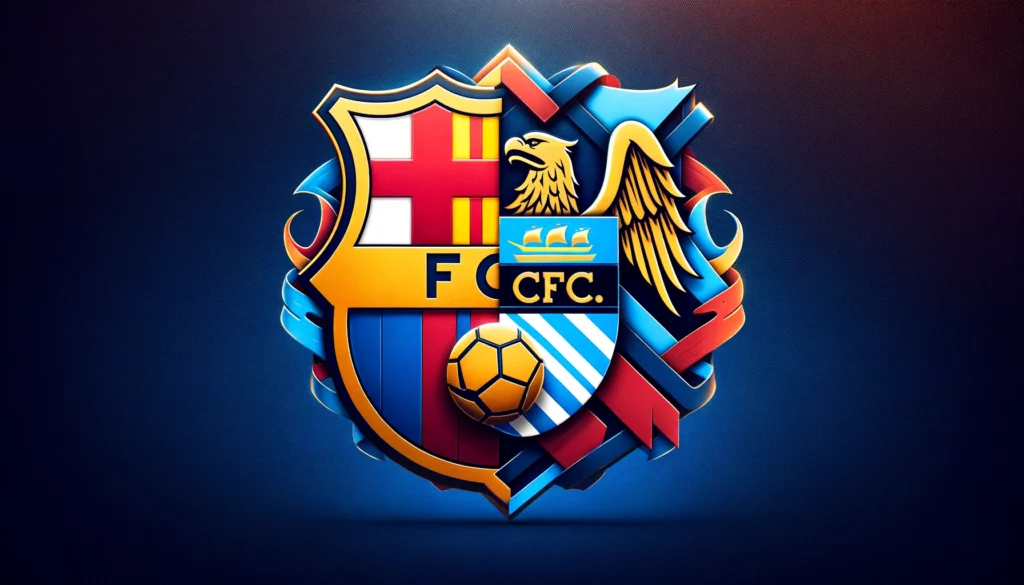
Zone 14 is more than just an area of the pitch, it is a strategic key to success in modern football. Teams that can control this zone and utilise it effectively have a significant advantage over their opponents. The integration of video analysis into tactical development makes it possible to further increase efficiency in zone 14 and make well-founded decisions. It is therefore particularly exciting for football fans to observe the action in this zone in order to better understand the subtleties and tactical masterpieces of the game. Through detailed analysis and targeted use of this crucial zone, teams can maximise their chances of scoring and ultimately winning.